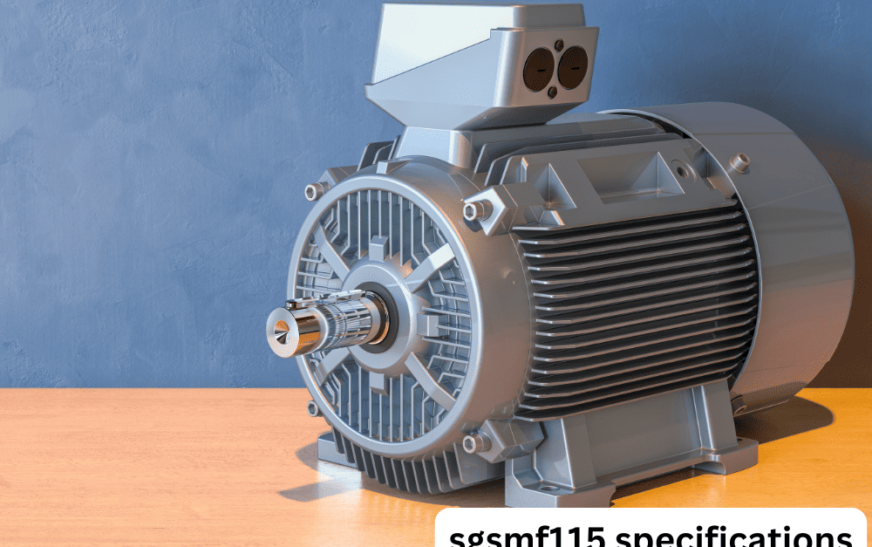In the ever-evolving landscape of video streaming and media technology, Wowza Streaming Engine stands out as a powerful solution for live and on-demand video streaming. To streamline development and simplify the integration process for developers, tools like the Wowza Gradle Plugin have become essential. With Gradle being one of the most popular build automation tools for Java-based projects, the Wowza Gradle Plugin makes it easier to build, configure, and deploy Wowza projects efficiently.
This article provides a detailed exploration of the Wowza Gradle Plugin, from its installation to its advanced configurations, showcasing how developers can leverage this tool to enhance their Wowza streaming projects. Additionally, we’ll discuss the plugin’s features, best practices, and real-world applications to help both beginners and advanced users optimize their workflows.
Introduction to Wowza Streaming Engine
What is Wowza Streaming Engine?
Wowza Streaming Engine is a media server software platform that enables users to stream live or on-demand video and audio content. It is widely recognized for its flexibility, scalability, and support for various streaming protocols such as RTMP, HLS, and MPEG-DASH. Wowza is designed to cater to the needs of media companies, broadcasters, and enterprises, offering customizable options to deliver high-quality streaming experiences.
Why Use Wowza with Gradle?
For developers working with Wowza, managing builds, dependencies, and configurations manually can become complex, especially in large-scale projects. This is where Gradle comes into play. Gradle automates the build process and simplifies dependency management, making it easier to handle project lifecycles. By combining Wowza Streaming Engine with Gradle, developers can streamline the entire build process, leading to faster development and deployment cycles.
Introduction to Wowza Gradle Plugin
What is the Wowza Gradle Plugin?
The Wowza Gradle Plugin is a specialized plugin that integrates with Wowza Streaming Engine to automate and simplify the build and deployment process of Wowza applications. It extends the capabilities of Gradle by adding custom tasks tailored to Wowza projects, enabling developers to automate tasks like compiling code, managing dependencies, packaging, and deploying Wowza modules directly from the build system.
The plugin ensures that Wowza projects are built efficiently, providing developers with an easy-to-use framework for managing their Wowza-based applications.
Why is the Wowza Gradle Plugin Important?
Using the Wowza Gradle Plugin provides several benefits, such as:
- Efficiency: Automating the build process reduces manual errors and speeds up project development.
- Flexibility: The plugin supports customizable tasks, making it easier for developers to tailor the build and deployment process according to project needs.
- Scalability: For large-scale Wowza projects, managing builds with Gradle becomes more organized, enabling better collaboration across teams.
- Streamlined Deployment: Deploying Wowza modules directly from the Gradle build ensures consistency and faster time-to-market.
Setting Up the Wowza Gradle Plugin

Prerequisites
Before setting up the Wowza Gradle Plugin, ensure that you have the following prerequisites:
- Java Development Kit (JDK) installed (Java 8 or higher is recommended).
- Gradle installed (version 5.0 or higher).
- Wowza Streaming Engine installed and properly configured on your system.
To verify that Gradle is installed, open a terminal or command prompt and type the following command:
Copy code
gradle -v
This will display the current version of Gradle installed on your machine.
Installing the Wowza Gradle Plugin
Create a Gradle Project: First, create a new directory for your Wowza project and navigate to it:
Copy code
mkdir wowza-project
cd wowza-project
Add the Wowza Gradle Plugin to the build.gradle file: In the build.gradle file, add the following code to include the Wowza Gradle Plugin:
groovy
Copy code
plugins {
id ‘com.wowza.gradle.plugin’ version ‘1.0.0’ // Replace with the actual version of the plugin
}
repositories {
mavenCentral()
}
dependencies {
implementation ‘com.wowza:wowza-gradle-plugin:1.0.0’ // Replace with the appropriate version
}
Configure the Wowza Gradle Plugin: Once the plugin is added to your project, you need to configure it by specifying the paths and settings related to your Wowza Streaming Engine installation.
For example, add the following configuration block to your build.gradle file:
groovy
Copy code
wowza {
serverHome = “/path/to/wowza/server” // Replace with your Wowza Streaming Engine directory
modules {
mainModule {
sourceSet = sourceSets.main
outputDir = file(“$buildDir/libs”)
}
}
}
Run the Build: After configuring the plugin, you can run the build command to compile and package your Wowza application:
Copy code
gradle build
This will compile your code, package the output into the appropriate directories, and prepare it for deployment.
Key Features of the Wowza Gradle Plugin

Customizable Build Tasks
One of the most powerful features of the Wowza Gradle Plugin is its ability to define custom tasks for specific Wowza-related operations. For instance, you can create tasks to automate module deployment, manage server configurations, or clean up old builds. Here’s an example of a custom task in the build.gradle file:
Copy code
task deployWowzaModule(type: Copy) {
from buildDir
into “$wowza.serverHome/lib”
include ‘**/*.jar’
}
Running this task with gradle deployWowzaModule will copy the necessary files to the Wowza server’s lib directory.
Dependency Management
The plugin leverages Gradle’s dependency management system, making it easy to include third-party libraries, Wowza modules, or any required dependencies. You can define dependencies in the dependencies block:
Copy code
dependencies {
implementation ‘org.slf4j:slf4j-api:1.7.30’
implementation ‘com.wowza:wowza-media-server:4.8.0’
}
This automates the downloading and linking of necessary dependencies, ensuring your Wowza application has everything it needs to run properly.
Integration with IDEs
The Wowza Gradle Plugin integrates seamlessly with popular IDEs like IntelliJ IDEA and Eclipse. This allows developers to manage Wowza projects within their preferred development environment while taking advantage of Gradle’s build automation and Wowza-specific tasks. IDEs with Gradle support automatically recognize tasks, making the development and debugging process much smoother.
Advanced Configuration of Wowza Gradle Plugin
Multi-Module Wowza Projects
For larger Wowza projects with multiple modules or services, the Wowza Gradle Plugin supports multi-module configurations. This is especially useful for projects that involve several independent Wowza modules that need to be built and deployed separately. You can structure your project using a Gradle multi-project build, with each module having its own build.gradle file.
Copy code
// settings.gradle
include ‘module1’, ‘module2’
Each module can have its own set of configurations, dependencies, and custom tasks.
Continuous Integration with Jenkins
The Wowza Gradle Plugin can be integrated with continuous integration (CI) systems like Jenkins. By using the plugin in a Jenkins pipeline, you can automate the build, testing, and deployment of Wowza projects. Here’s an example Jenkinsfile:
Copy code
pipeline {
agent any
stages {
stage(‘Build’) {
steps {
sh ‘gradle build’
}
}
stage(‘Deploy’) {
steps {
sh ‘gradle deployWowzaModule’
}
}
}
}
This allows for continuous deployment of Wowza modules, ensuring that updates are quickly and efficiently pushed to production environments.
Benefits of Using Wowza Gradle Plugin
Improved Productivity
By automating tasks like compiling, packaging, and deploying, the Wowza Gradle Plugin significantly improves developer productivity. Developers can focus on writing code rather than managing manual build processes, saving time and reducing the chances of errors.
Simplified Dependency Management
Managing dependencies can be a complex process in large projects. The Wowza Gradle Plugin simplifies this by allowing you to define dependencies in one place and automating the process of resolving and integrating them into your Wowza project.
Scalability for Larger Projects
For developers working on large-scale streaming applications, the Wowza Gradle Plugin offers a scalable solution. With support for multi-module projects, continuous integration, and custom build tasks, the plugin can handle even the most complex Wowza setups.
Best Practices for Using Wowza Gradle Plugin
Regularly Update Dependencies
Keep your project’s dependencies up to date to ensure you’re using the latest versions of libraries and Wowza modules. This helps maintain security, performance, and compatibility.
Automate Testing
Integrate automated testing into your Wowza build process. You can use tools like JUnit to write unit tests for your Wowza modules and automate them using Gradle tasks.
Version Control for Build Scripts
Store your build.gradle file and any related configurations in a version control system like Git. This ensures that your build process is reproducible and traceable, allowing for easier collaboration across teams.
Common Challenges and How to Overcome Them
Dealing with Dependency Conflicts
In some cases, you may encounter conflicts between different versions of libraries required by your Wowza project. To resolve this, Gradle allows you to define specific versions of dependencies, or exclude conflicting dependencies:
Copy code
dependencies {
implementation (‘some.library:version’) {
exclude group: ‘conflicting.library’, module: ‘module-name’
}
}
Managing Wowza Server Configurations
When deploying modules to a Wowza server, it’s essential to ensure the server configuration matches your application’s requirements. You can automate this process by writing custom Gradle tasks that modify or validate server configurations before deployment.
Conclusion: Leveraging the Power of Wowza Gradle Plugin
The Wowza Gradle Plugin is an invaluable tool for developers working with the Wowza Streaming Engine. It simplifies the build process, improves productivity, and offers flexibility for large-scale projects. By automating deployment tasks, managing dependencies efficiently, and supporting integrations with CI systems, the Wowza Gradle Plugin makes it easier for developers to create robust, high-performance Wowza streaming applications.
Whether you’re a seasoned Wowza developer or new to streaming technology, mastering the Wowza Gradle Plugin can significantly enhance your development process and help you deliver streaming solutions faster and more effectively.
FAQs About Wowza Gradle Plugin
1. What is the Wowza Gradle Plugin used for?
The Wowza Gradle Plugin is used to automate the build, configuration, and deployment of projects developed for the Wowza Streaming Engine. It integrates Wowza-specific tasks with Gradle to streamline development workflows.
2. Can the Wowza Gradle Plugin handle multi-module projects?
Yes, the Wowza Gradle Plugin supports multi-module projects, allowing developers to manage complex Wowza projects that involve multiple independent modules.
3. How do I install the Wowza Gradle Plugin?
You can install the Wowza Gradle Plugin by adding the necessary plugin and dependencies in your build.gradle file. Then, configure it to point to your Wowza server for streamlined development.
4. Does the Wowza Gradle Plugin integrate with Jenkins for CI?
Yes, the Wowza Gradle Plugin can be integrated with Jenkins and other continuous integration systems to automate the build, testing, and deployment process.
5. What are the main benefits of using the Wowza Gradle Plugin?
The main benefits include automating the build and deployment process, managing dependencies, supporting multi-module projects, and integrating with CI systems like Jenkins, resulting in improved productivity and efficiency.













